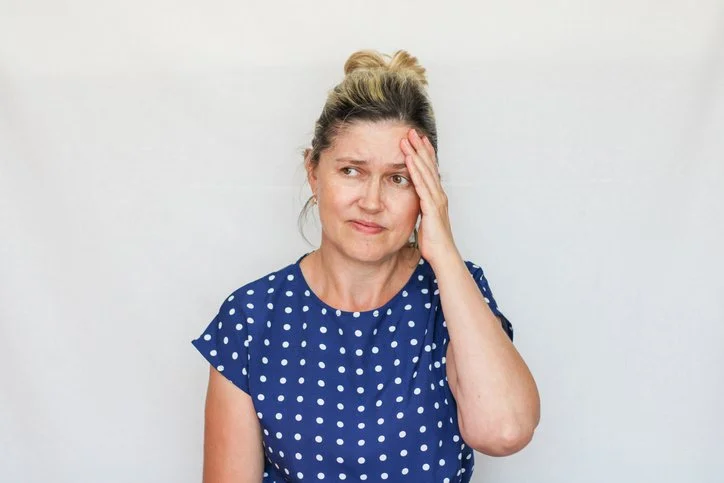The Quiet Change: A Holistic Journey Through Menopause Without the Fireworks
By Joy Stephenson-Laws, Holistic Coach, J.D., Founder
When I was younger, menopause sounded like something to dread.
I pictured sleepless nights, hot flashes, mood swings, and a body that suddenly felt like it belonged to someone else.
So when I reached my 40s and noticed only small changes—slightly irregular periods, a different kind of tiredness—I waited for the storm. But it never came.
I didn’t have hot flashes. My moods didn’t spin out of control. I didn’t feel like I was losing myself. Instead, I noticed something quieter: a shift inward. A slowing down. A new kind of clarity.
This is the story we don’t hear often enough: that menopause can be manageable—and even meaningful—when we support our bodies and minds in the right way.
What Is Perimenopause and Menopause?
Perimenopause is the time before menopause when hormone levels—especially estrogen and progesterone—begin to change. It usually starts in a woman’s 40s, but can begin earlier or later. This phase can last for several years.
Menopause officially begins when a woman has not had a period for 12 months in a row. The average age for menopause in the U.S. is 51.
During these changes, the body may experience symptoms like:
Hot flashes or night sweats
Irregular periods
Mood changes
Trouble sleeping
Brain fog
Vaginal dryness
Weight gain, especially around the belly
But here’s something important: not everyone experiences all—or even any—of these symptoms. According to the Mayo Clinic, about 15% of women have few or no noticeable symptoms.
Why My Menopause Was Gentle
I don’t claim to have had a perfect plan, but looking back, I think some key parts of my lifestyle helped:
Gentle, regular movement. I walked, avoided alcohol and drugs and stayed active—but didn’t push myself too hard.
Nourishing foods. I ate mostly whole, unprocessed meals with healthy fats, fiber, and plants. I didn’t follow strict diets or trends.
Rest and nervous system care. I protected my peace. I made space for stillness. That made a big difference in how calm I felt.
Letting go. I slowly stopped trying to prove or perform. That emotional shift may have helped my hormones stay balanced.
Nutrient Testing: The Missing Piece
One of the smartest decisions I made during this time was to get functional nutrient testing done. While I felt good overall, I wanted to know if my body was truly supported on the inside.
Bloodwork helped me check:
Vitamin D levels – critical for bone health, mood, and immune function
B vitamins, especially B6, B12, and folate – important for energy and brain function
Magnesium – helpful for sleep, mood, and muscle function
Iron and ferritin – low levels can cause fatigue, especially in women with heavy perimenopausal bleeding
Thyroid function – since thyroid issues can mimic menopause symptoms
These tests helped me catch small imbalances before they became problems, and gave me peace of mind that my body had what it needed to move through the transition smoothly.
You can ask your doctor for these labs, or work with a functional medicine practitioner who offers more in-depth panels. Sometimes symptoms that seem hormonal are actually related to nutrient depletion, thyroid issues, or chronic stress.
The Science Behind the Change
As women move through perimenopause, their estrogen and progesterone levels drop, affecting many systems in the body. Estrogen influences:
Body temperature
Sleep quality
Brain function and mood
Bone and heart health
According to the North American Menopause Society (NAMS), the drop in estrogen can cause brain fog, poor sleep, or emotional ups and downs. But these changes don’t mean your body is failing—they’re part of a natural transition.
Your experience may be shaped by:
Stress levels (especially long-term stress)
Blood sugar balance
Diet and movement
Gut and liver health
Genetic factors
Some scientists also highlight the adrenal glands, which help make hormones like cortisol and also produce small amounts of estrogen. If a woman is burned out or under chronic stress, her adrenals may not be able to support a smooth transition.
Holistic Ways to Support Menopause
Even if your symptoms are strong, there are natural ways to support your body and mind through this season:
Food as Medicine
Flaxseeds, lentils, chickpeas, and tofu contain phytoestrogens—plant-based compounds that gently support hormone balance.
Healthy fats from fish, nuts, seeds, and avocado support brain and heart health.
Cut back on sugar and alcohol, which can make hot flashes, anxiety, and sleep issues worse.
Supplements & Herbs
Magnesium for sleep, mood, and muscle relaxation
Ashwagandha to calm the stress response and support the adrenals
Black cohosh to help with hot flashes (use under medical guidance)
Vitamin D3 and K2 to support bones and hormone function
Movement That Matches Your Energy
Strength training helps prevent bone loss and supports metabolism
Yoga and walking ease joint pain, lower stress, and improve mood
Stretching and breathwork can support better sleep and emotional balance
Mind, Heart, and Spirit
Journaling, therapy, or meditation to process big emotional changes
Spiritual practice—prayer, nature, or quiet time—to ground and nourish your soul
Women’s circles or support groups can help you feel less alone and more seen
What This Season Taught Me
Menopause is not a disease. It’s a rite of passage. A physical, emotional, and spiritual transition into a new phase of power and presence.
It has taught me to listen deeper. To move slower. To honor my body not for what it produces, but for what it holds.
If your experience with perimenopause is loud and messy—or quiet and strange—you’re not alone. You’re changing. And there are tools to help you.
Sources & Further Reading
Harvard Health Publishing. (2021). “Managing Menopause Naturally.”
Office on Women’s Health, U.S. Dept. of Health and Human Services.
Freeman, E. W., et al. (2005). “Symptoms Associated with Menopause Transition.” Obstetrics & Gynecology
Greendale, G. A., et al. (1999). “The menopause transition and women’s health at midlife: a progress report.” American Journal of Medicine





